Layered Sequences
Contents are extracted from the Advanced UVM sessions by Verification Academy.
Sequences and sequencers
Most sequences run on sequences
- One sequencer per agent
- Env may define default sequence
- Can be overridden via factory
- Test defines other sequences
Sequences generate items
- Sequencer send the items to the driver
Tests require coordinating multiple sequences on multiple DUT interfaces (virtual sequencers)
Virtual sequences
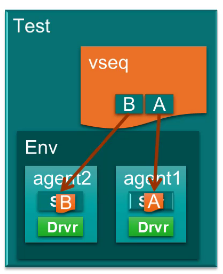
Only manages the execution of other sequences
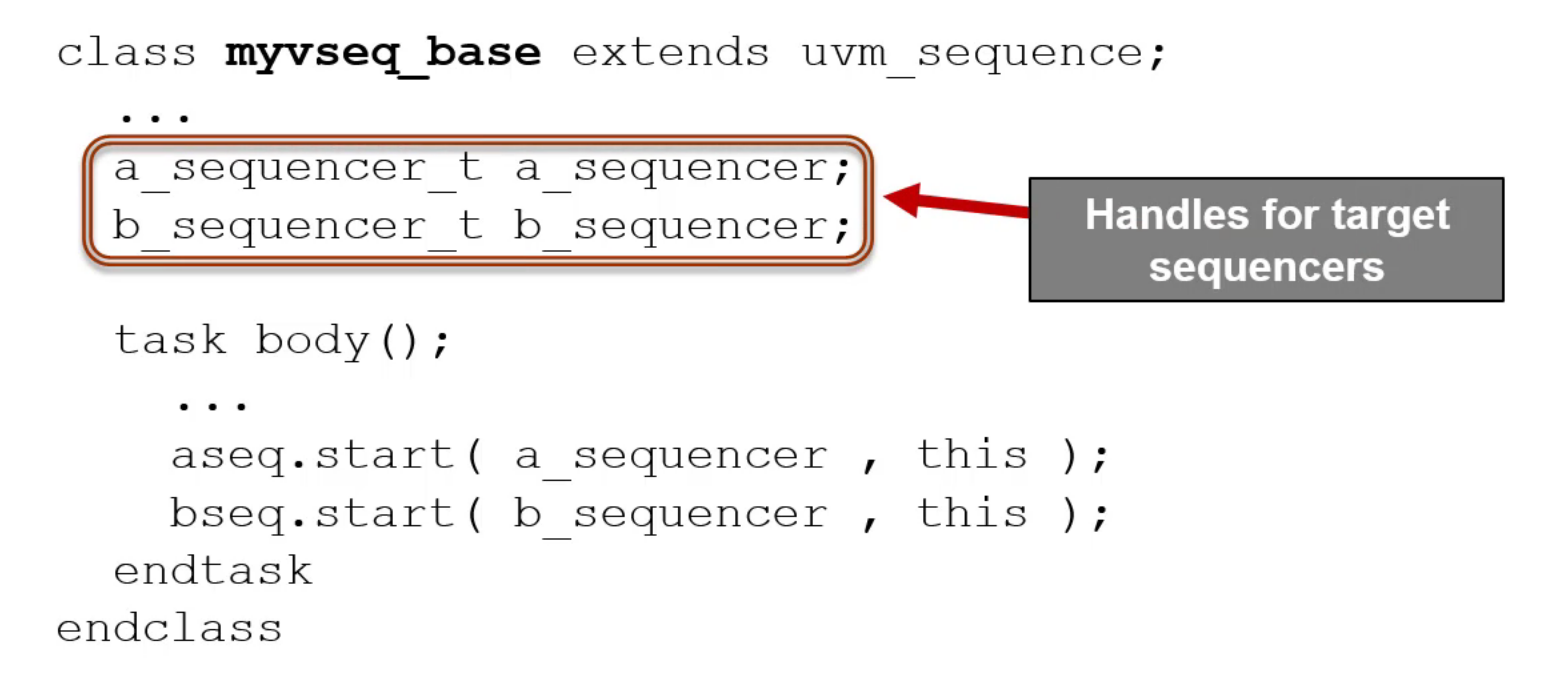
Do the sequencer’s handle passing from the test since only the test know the hierarchical path to the sequencer

Start
vseqwithnullsequencer since it doesn’t need to be executed on any sequencer
Initialization
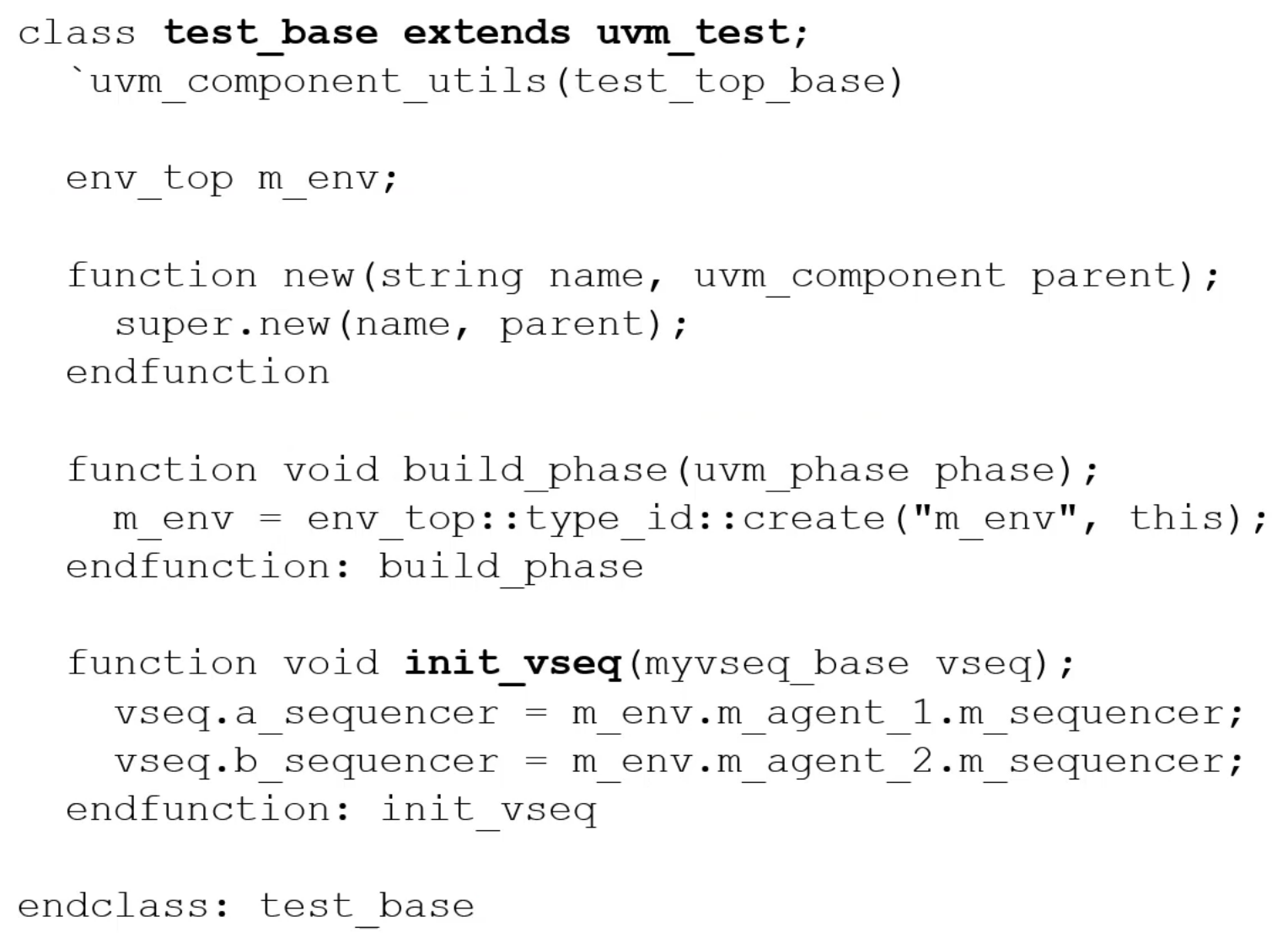
init_vseq: Method to initialize the virtual sequence handles (the sequencer handles)Calling in
run_phase
Using virtual sequence in a test
Extends the base test for reusability
startmethod of the virtual sequence will execute thebodytask → Starting sequences in any fashion defined
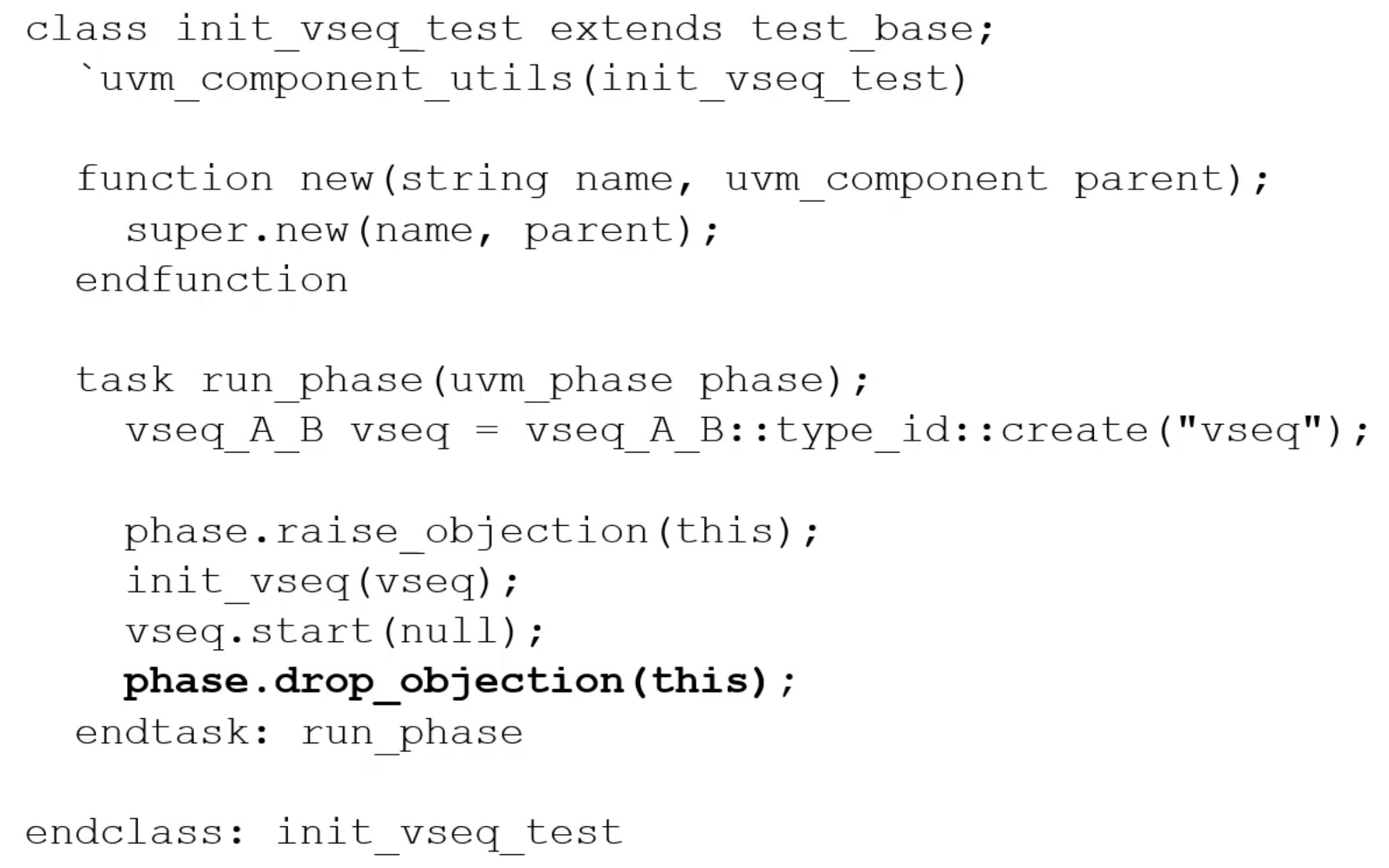
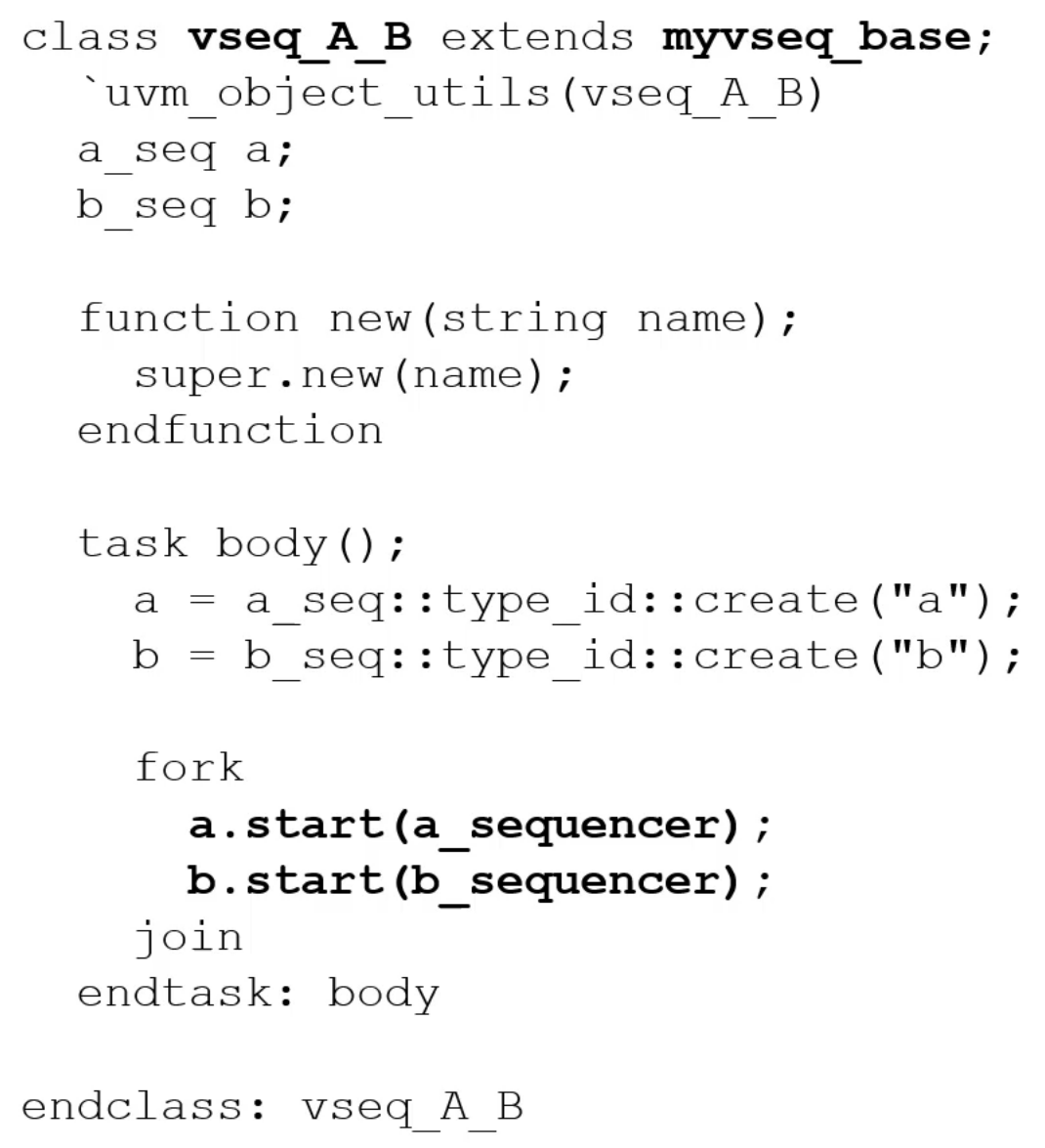
Use virtual sequencer as alternative
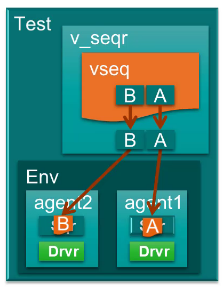
Since the virtual sequencer is a component, the passing sub-sequencer handling to the virtual sequencer occurs on the
connect_phase
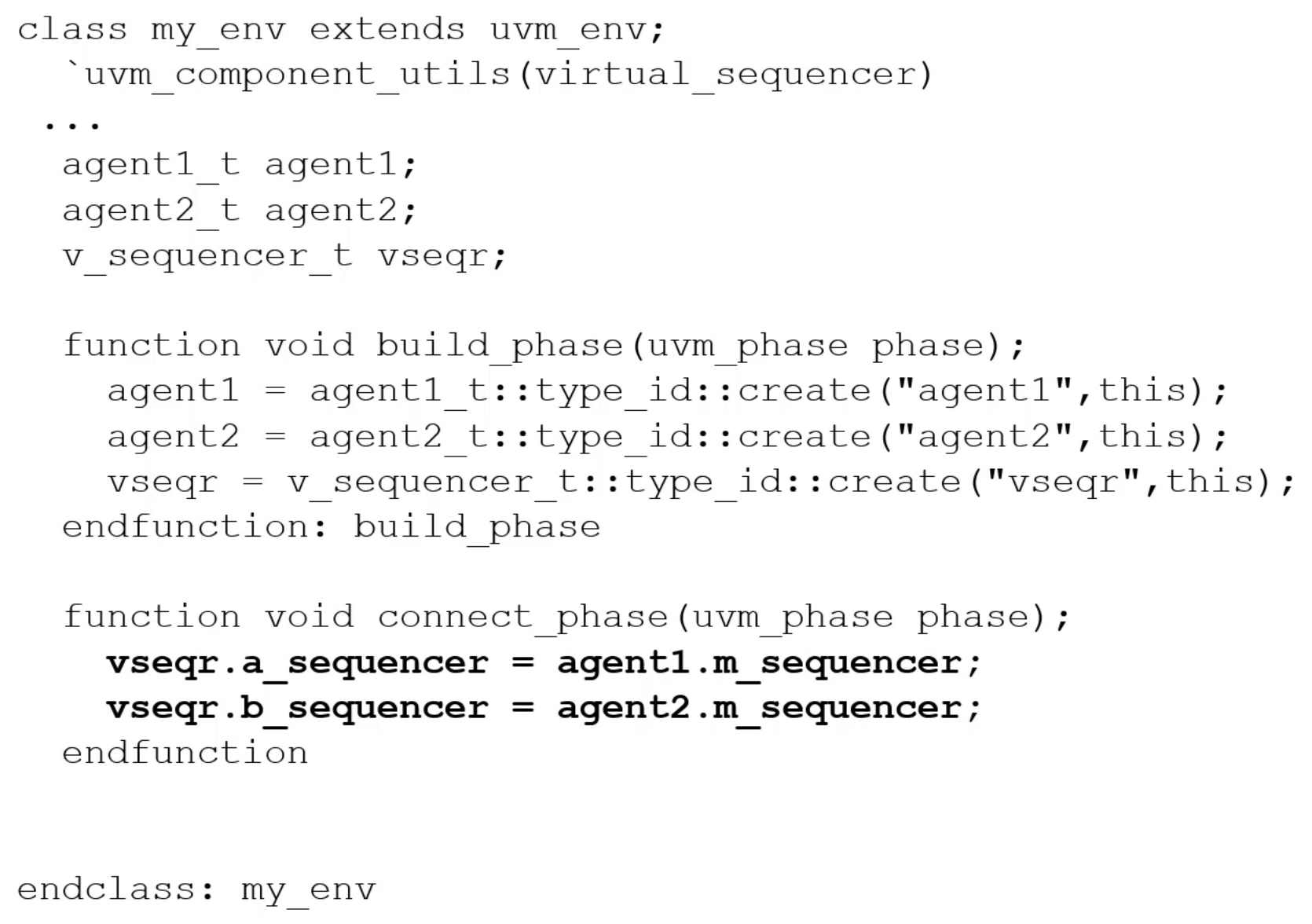
Virtual sequence base
Also includes the handle to the virtual sequencer it’s going to be started on
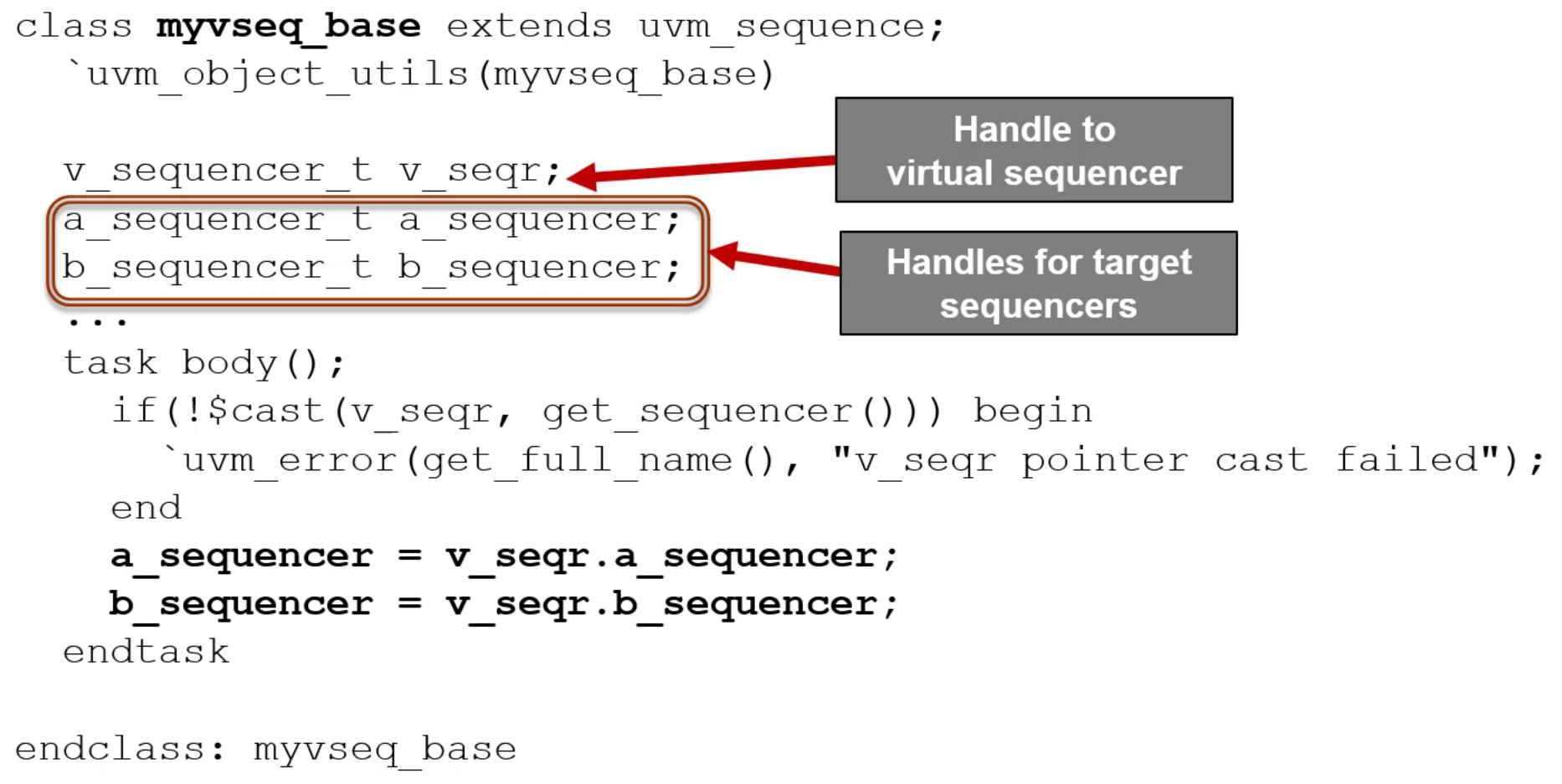
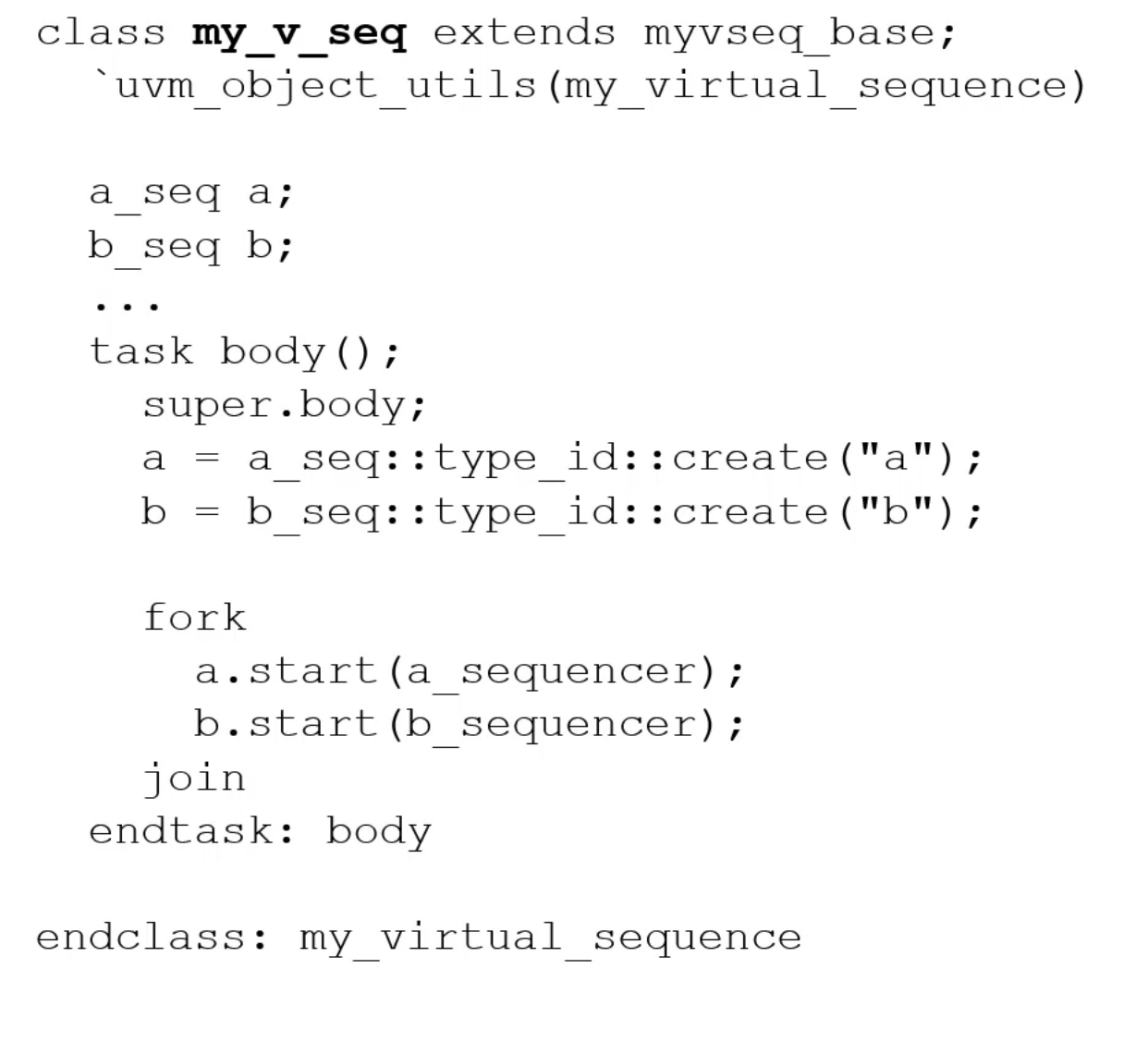
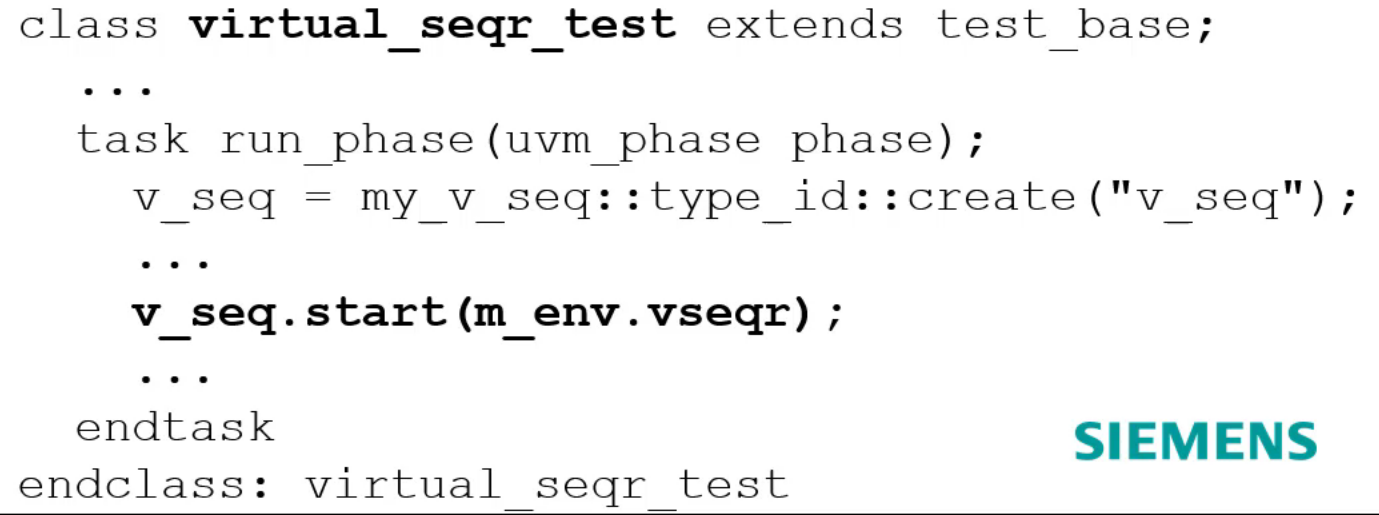
Layered protocols
Hierarchical Protocols (PCIe, USB3.0, MIPI LLI..)
- Transaction layer
- Transport layer
- Physical layer
Protocol-Independent
- Generic layer (e.g. TLM2.0 GP)
- Specific protocol (e.g. AMBA AHB)
All require sequence items to be deconstructed and reconstructed
- One-to-many:
- High-level transaction broken down to many low-level transactions
- Many-to-one:
- Many high level transaction will be used to composed a large low-level transactions
Tests start sequences
Want to execute sequences at the top layer
- Test starts sequence on sequencer
Reuse as much as possible
- Protocol agent on the bus
- Sequencers/monitors at higher layers
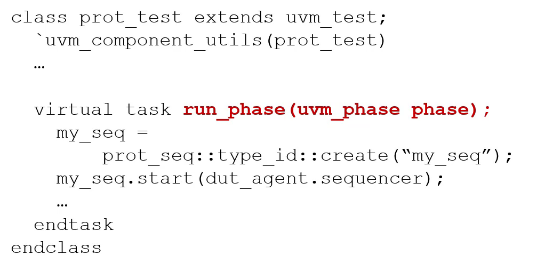
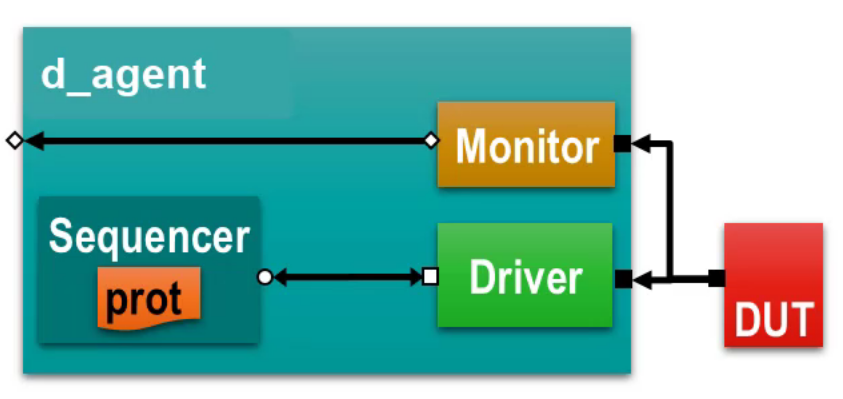
Adding layer
From “above”, he layer looks like a UVC
- Run sequence(s) on sequencer
- Monitor (
analysis_port) to report activity
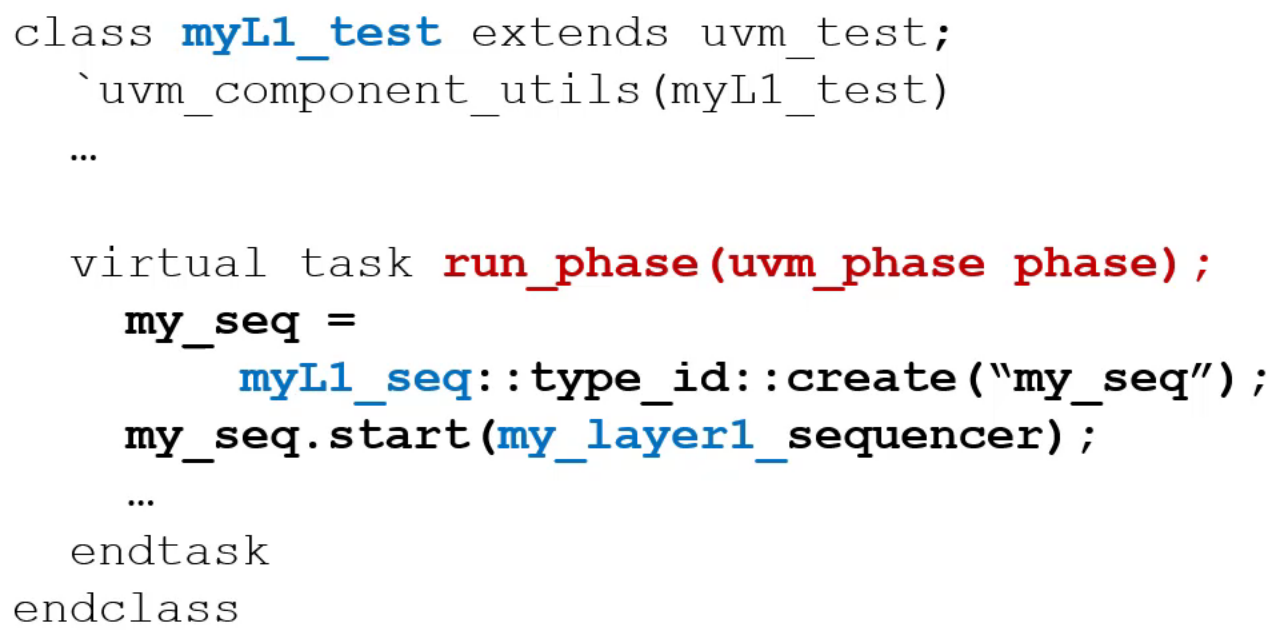

Must be able to execute sequences on protocol layer
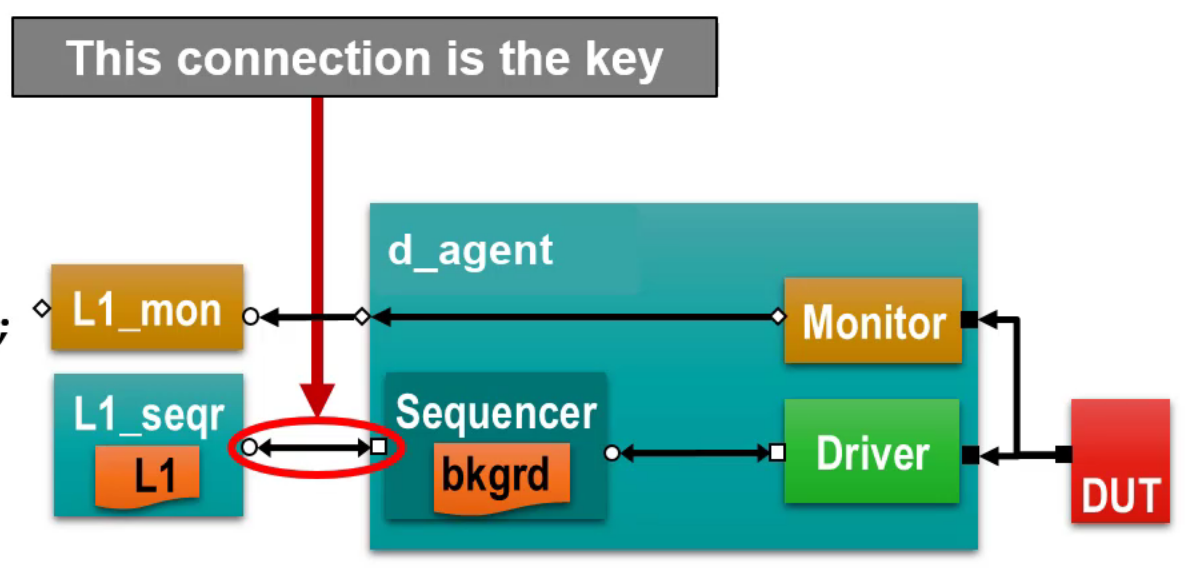
Translation sequence
Translation sequence runs on the lower sequencer
- Handles the layering connection
- Converts items between layers
Have the handle to the upper level sequencer
Parameterized by the transaction item of the upper level sequencer
- Declare transaction item type of the upper level sequence and transaction item type of the lower level sequence to be sent downstream to the driver
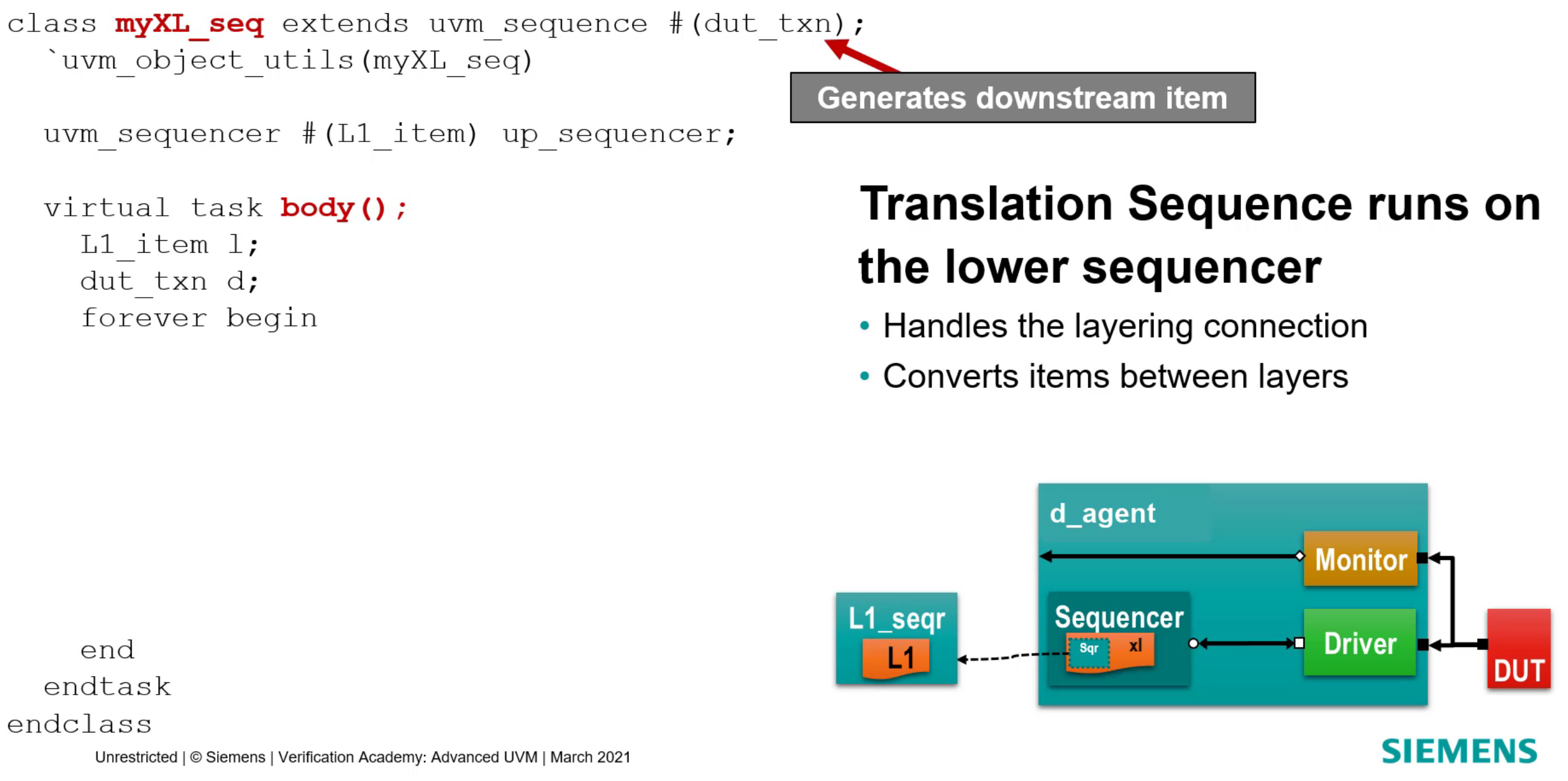
Translation sequence is a dynamic object → Can’t actually have a port here
⇒ Use the get_next_item method of the sequencer to get the transaction
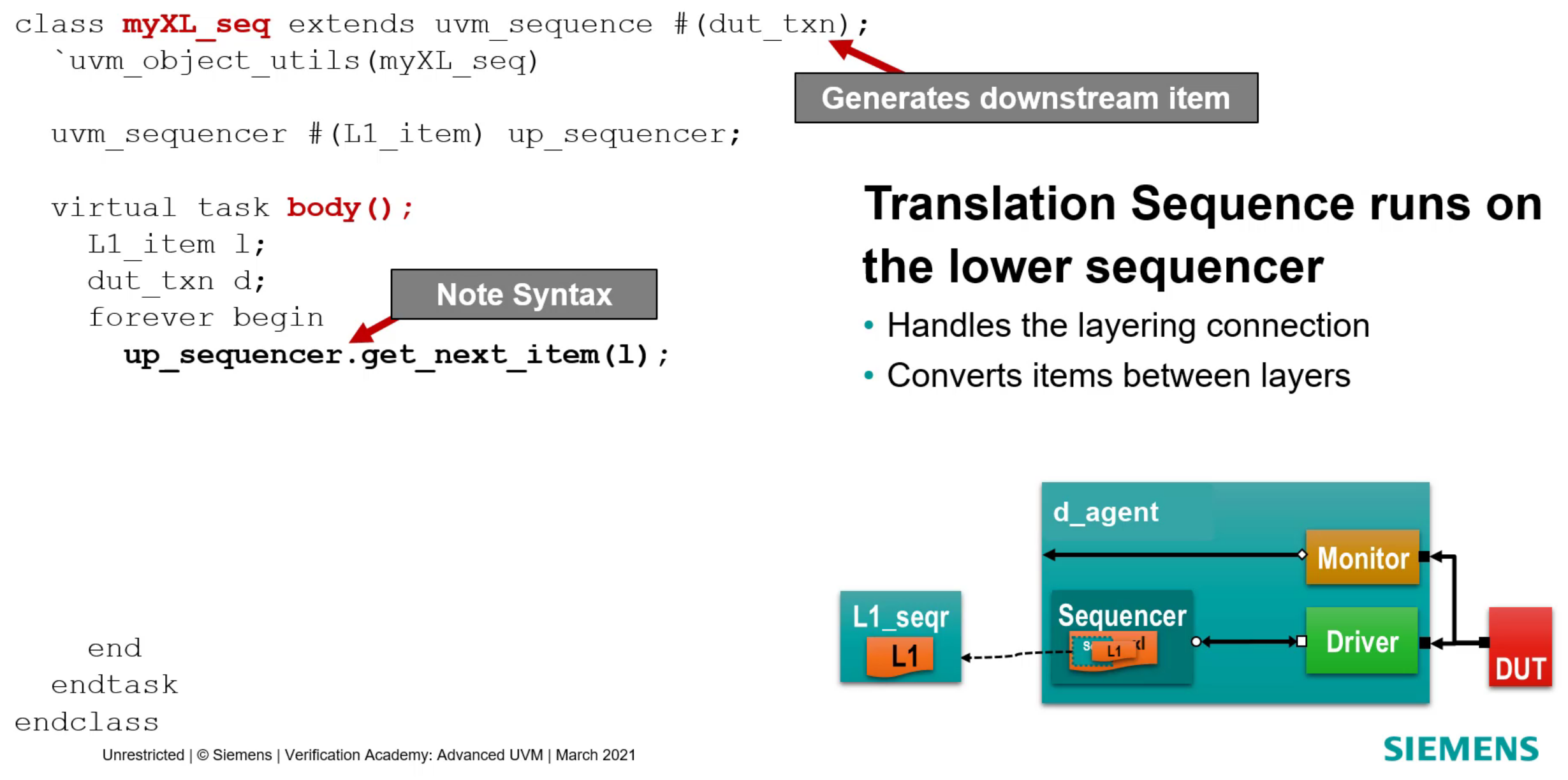
Do the translation to lower level transaction type as needed and send it to the driver using
start_itemandfinish_itempair

Signal back to the upper level sequencer by calling
item_done()method
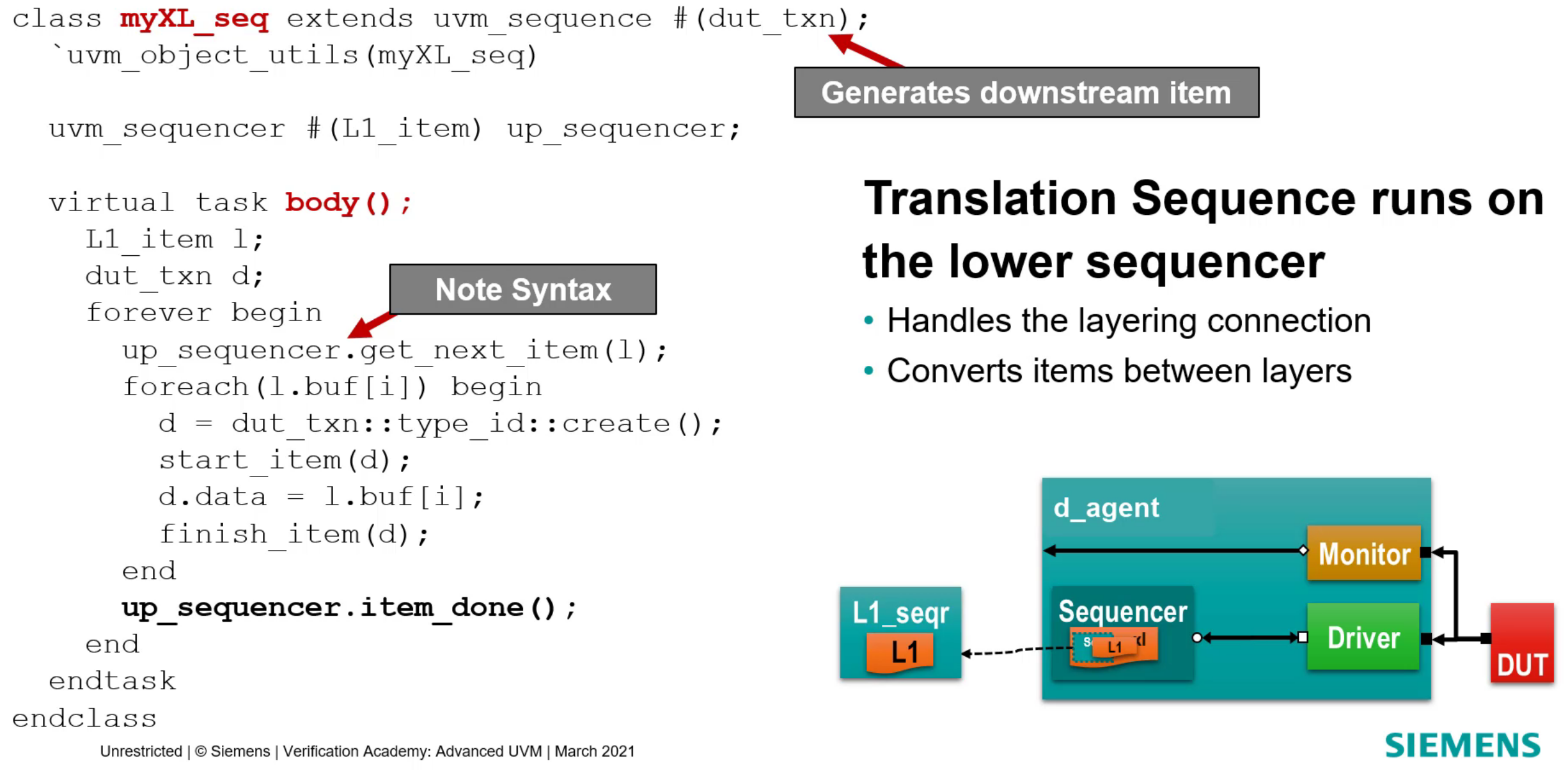
Analysis path
*Each layer uses a reconstruction monitor
- The “inverse” of the translation sequence
- Assembles high-level items from lower-level items
Connect the
analysis_exportof the monitoranalysis_portof the agent to receive the lower-level transaction
The L1_mon having the analysis port to send out the higher level translated transaction
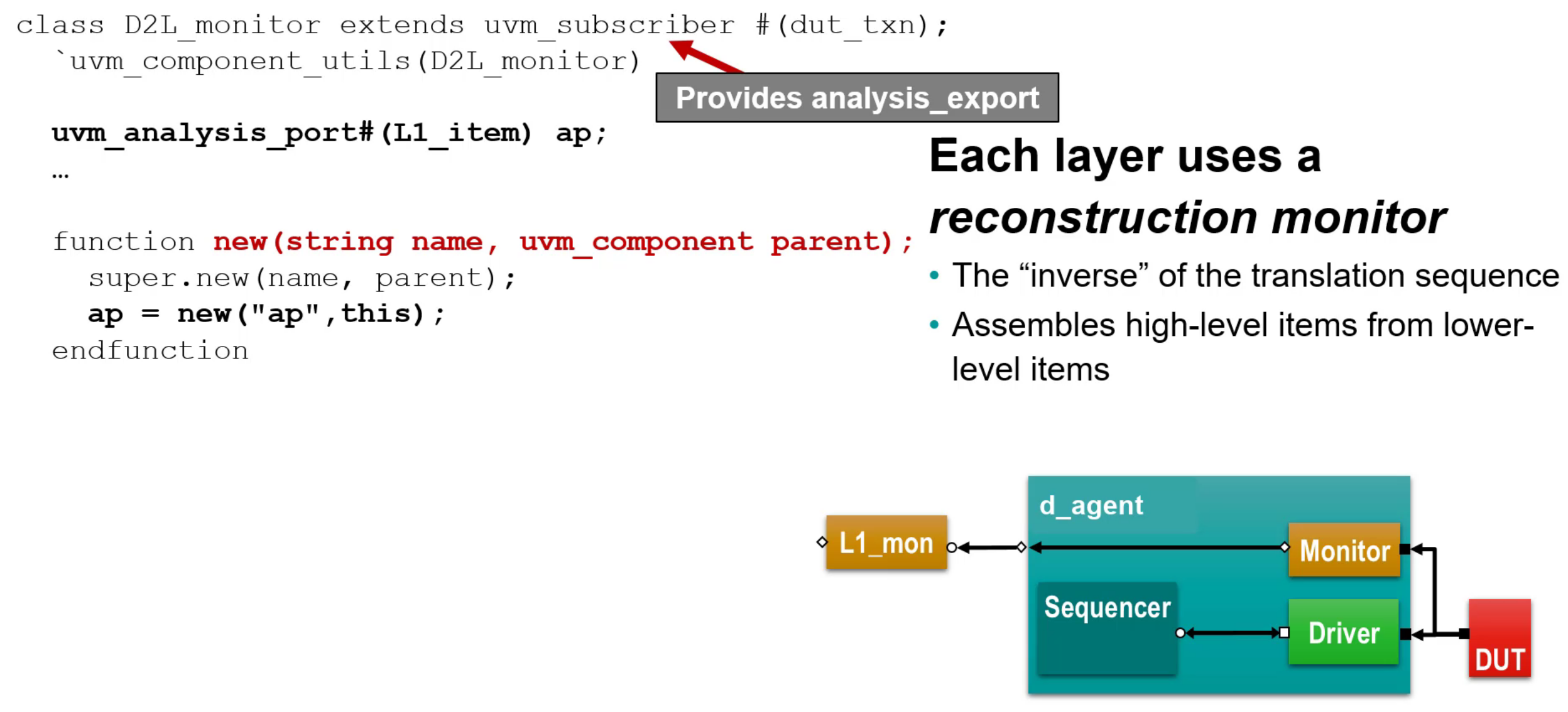
Example can be seen on the UVM Cookbook
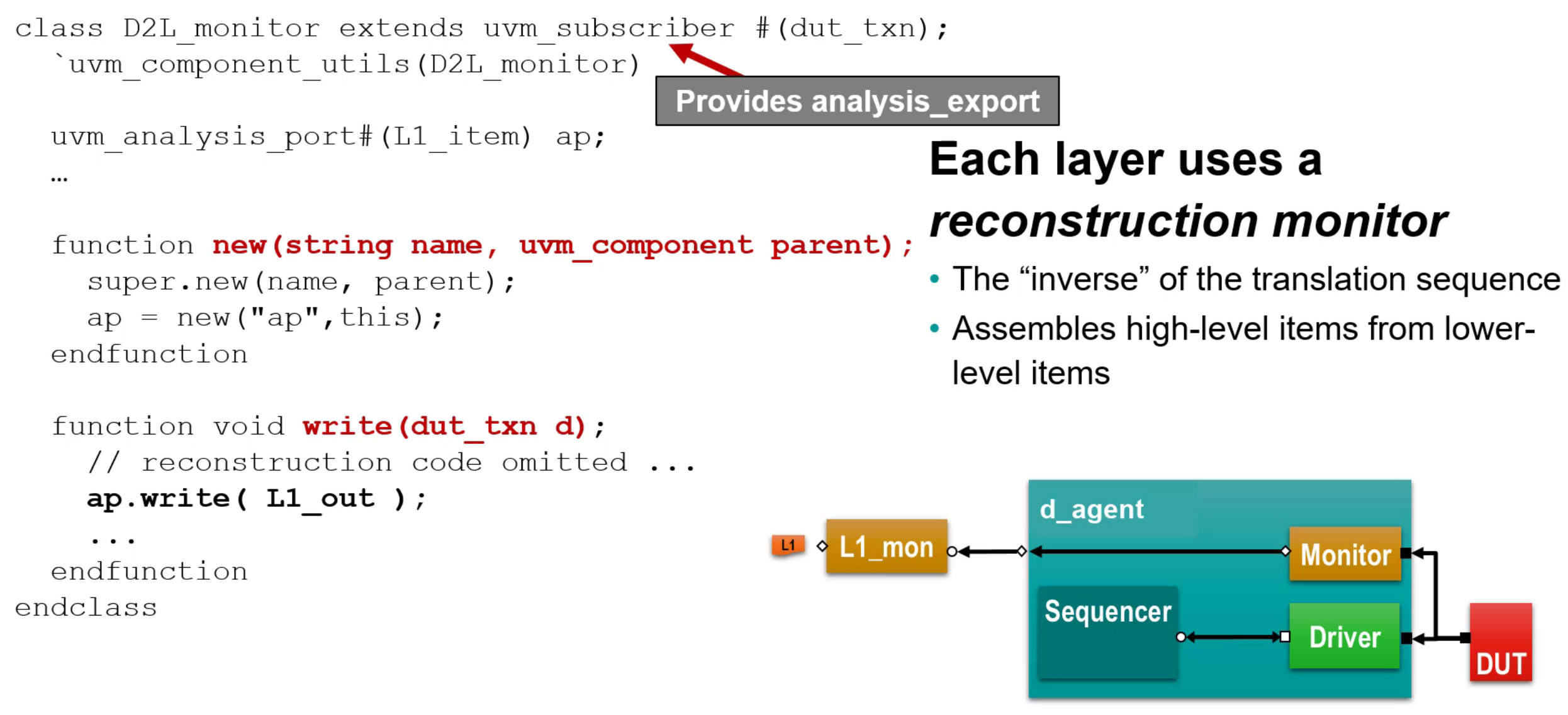
Layered agent
Having the handle of the
dut_agentto access its sequencer
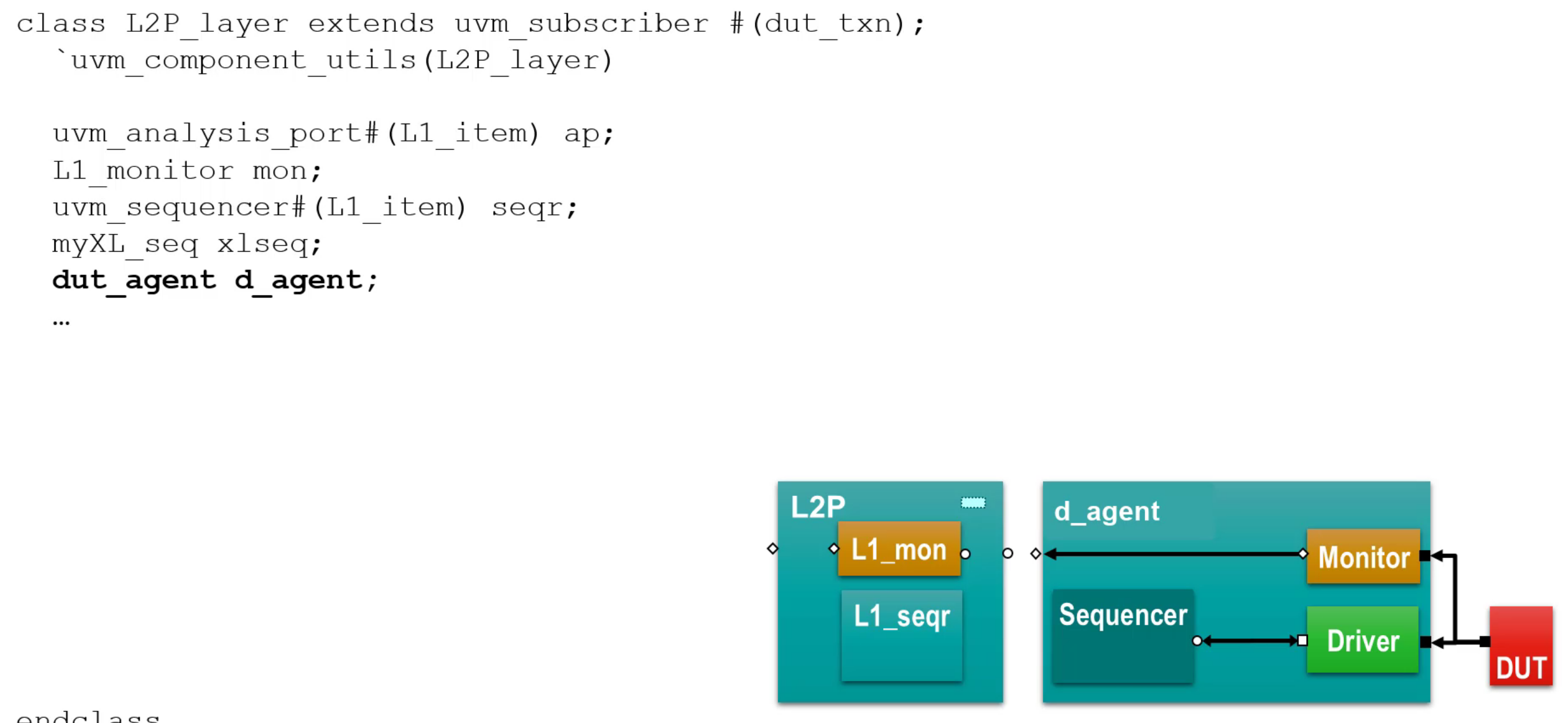
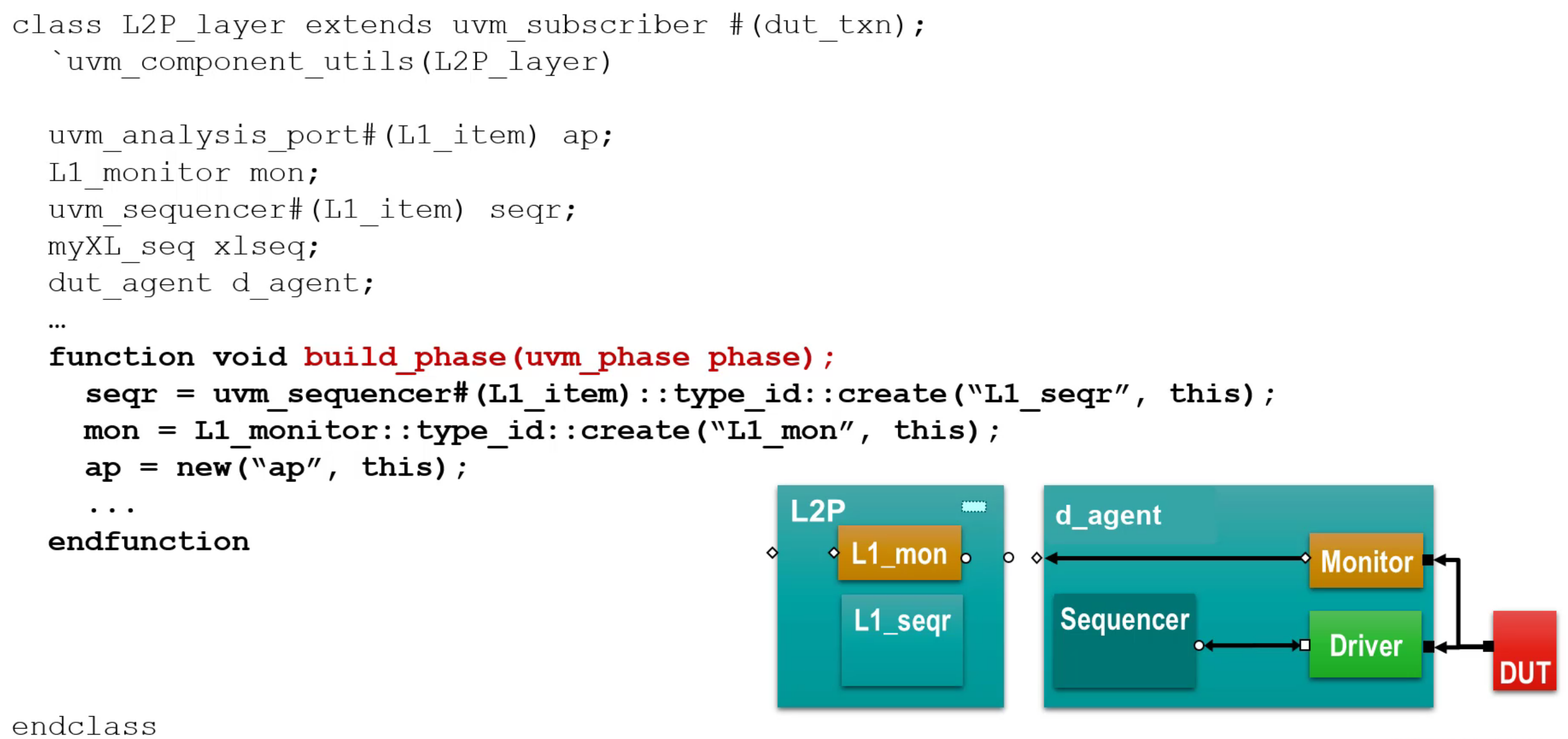
Connect phase connecting the analysis port and export of the monitor to the agent’s
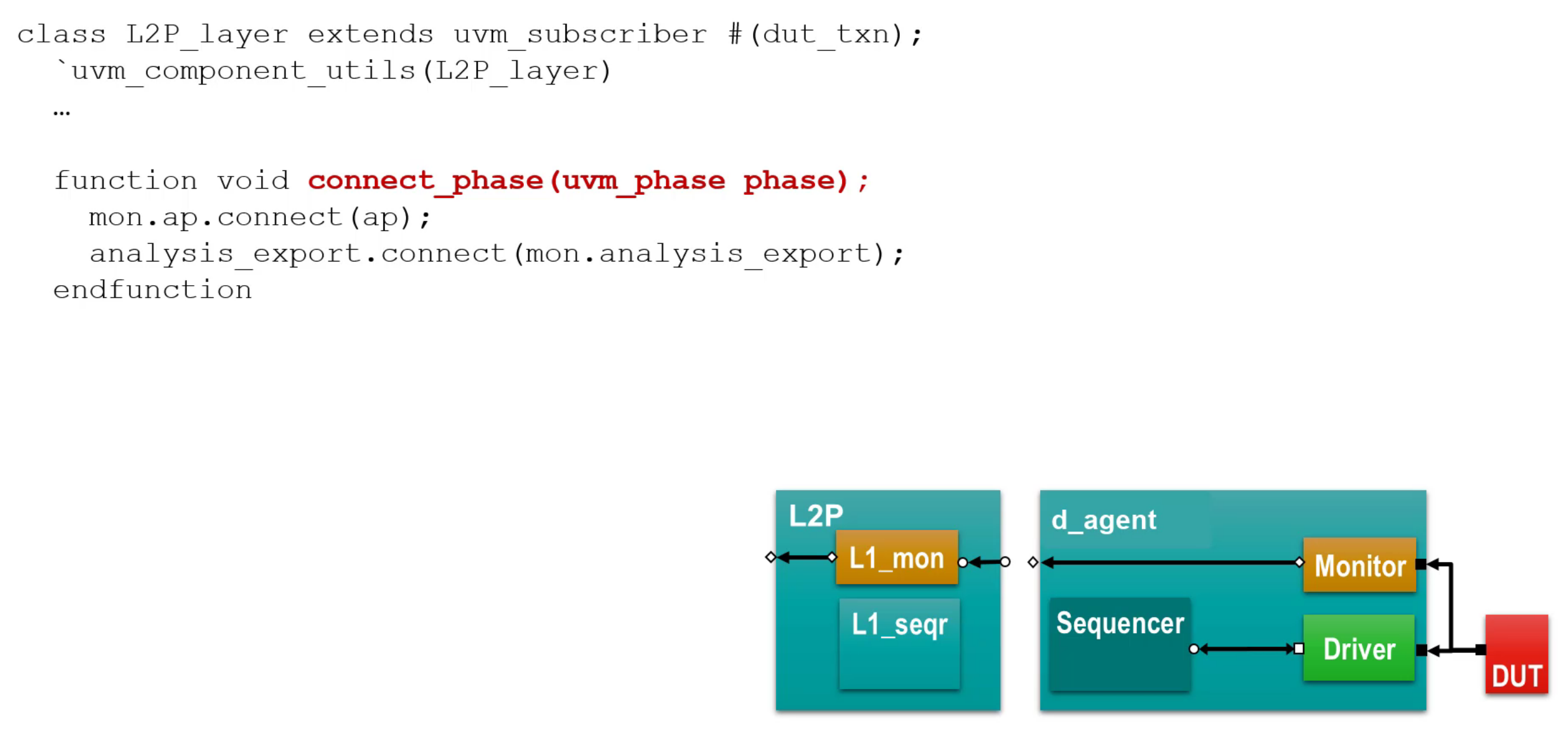
Run phase starting the translation sequence
- Passing the up level sequencer handle (current sequencer of the Layered agent) to the sequence
- Start the sequence on the lower-level sequence (
dut_agent)
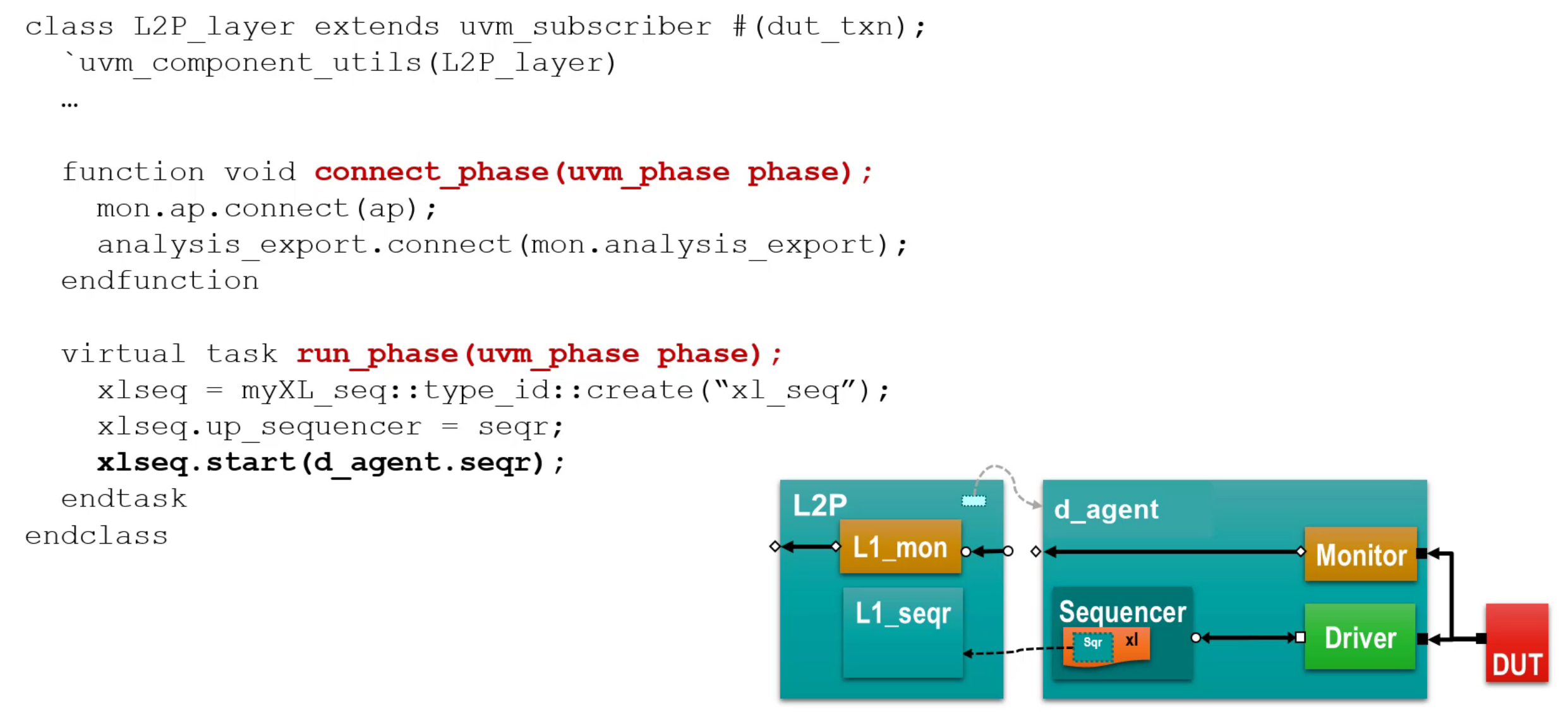
The environment
Connect components as usual
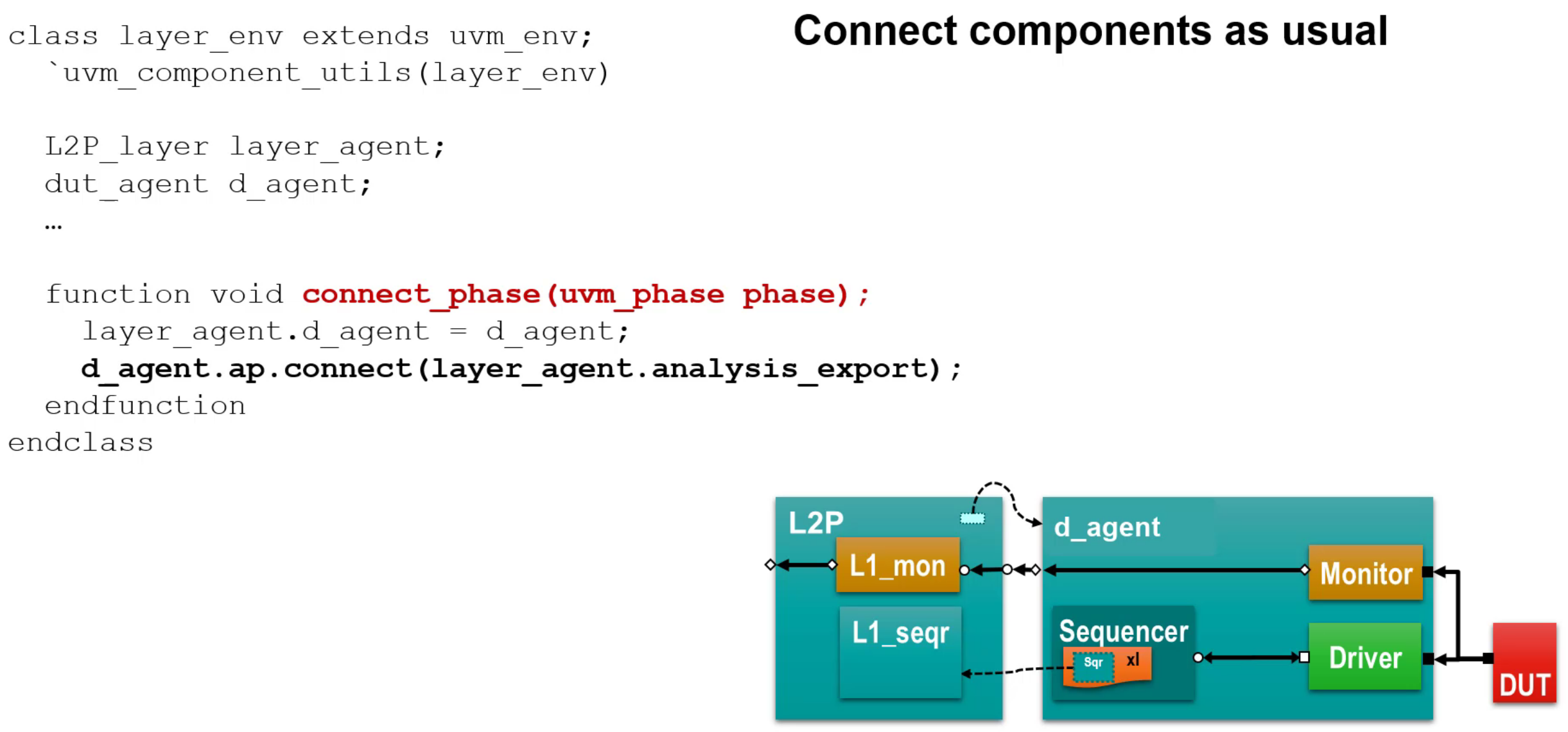
Multiple layered

The multi-layered agent
Encapsulate as many layers as needed
Make intermediate analysis_ports available as needed
From “above” it looks just like an agent

Internal protocol agent
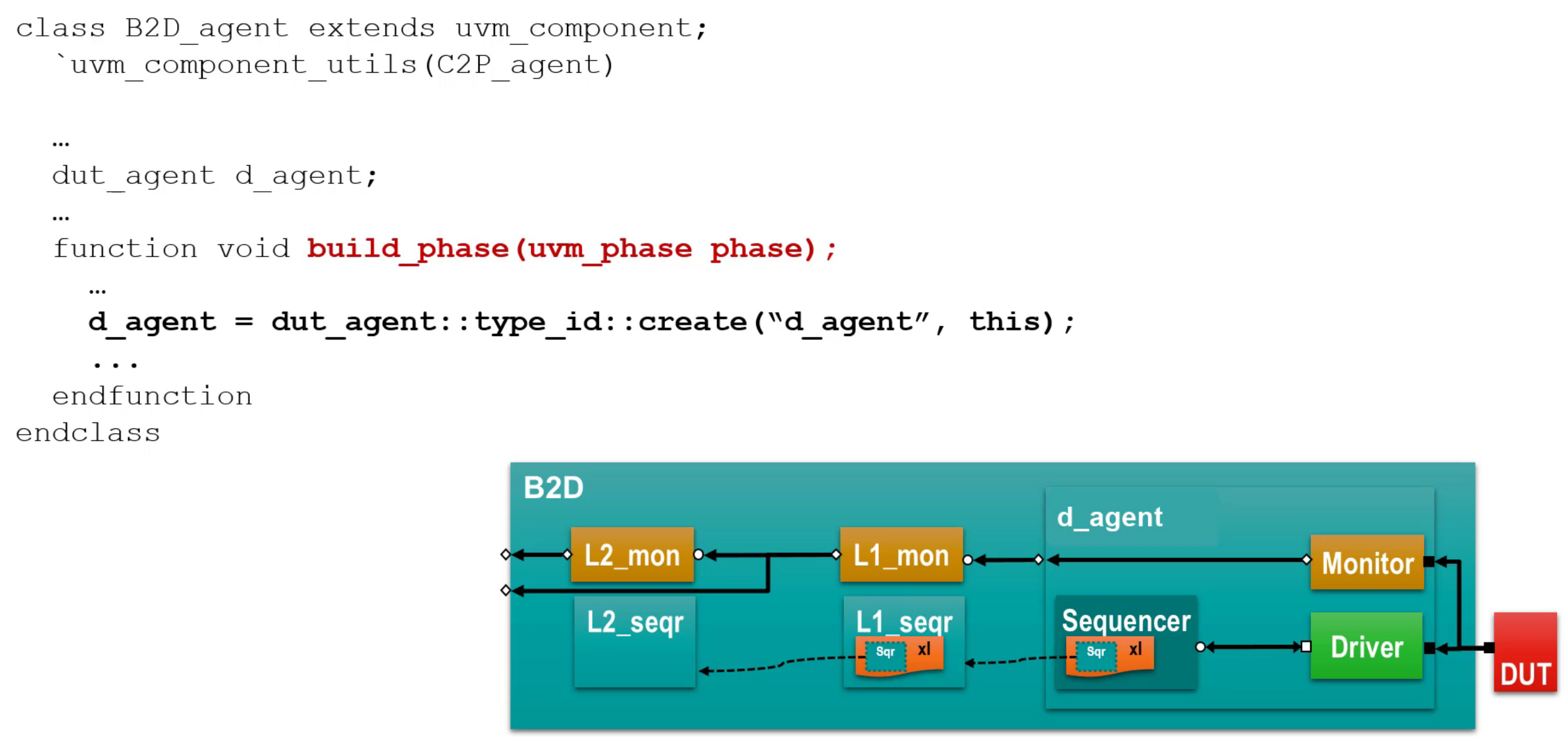
Summary
Layering agent has a child sequencer for every non-leaf-level
*Creates and starts a translation sequence for every non-leaf-level
- Translation sequence will be started on lower-level sequencer
- Translation sequence points back to higher-layer sequencers
*May include a reconstruction monitor for each non-leaf-level
Must have a handle to the leaf-level protocol agent
- Agent may be a child of the UVC or external
*Should create and connect an analysis_port for each monitor
Will usually have a configuration object associated with the layering agent